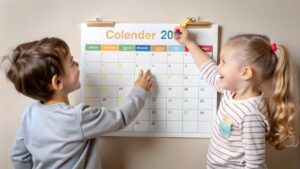The Education Blog

Choosing the Right Homeschool Curriculum for Your Child
Choosing a homeschool curriculum isn’t just about picking books or signing up for an online course. It’s about shaping the way your child learns, grows, and thrives in a setting tailored to their needs. Whether you’re a first-time homeschooler or looking to refine your current approach, finding the right fit can feel overwhelming. The market is saturated with options, each claiming to be the best.
But here’s the truth: the “perfect” curriculum doesn’t exist universally — it exists for your child, your goals, and your lifestyle. This guide will walk you through the key considerations to help you choose wisely and confidently. From understanding different curriculum types to matching them with your homeschool plans, we’ll equip you with both practical advice and professional insight.
Understanding Curriculum Types and Philosophies
Classical, Charlotte Mason, Montessori, and More
Homeschooling offers the flexibility to follow educational philosophies that align with your values and your child’s learning style. Here are a few of the most common approaches.

- Classical Education: Focuses on logic, rhetoric, and the trivium stages; ideal for structured learners.
- Charlotte Mason: Emphasises literature, nature, and short, meaningful lessons.
- Montessori: Child-led and hands-on, perfect for tactile and independent learners.
- Unit Studies: Integrates multiple subjects around one theme or topic.
- Eclectic: A flexible blend of different methods tailored to individual needs.
Understanding these frameworks helps you narrow down your curriculum choices and find a style that fits your child’s natural rhythm.
Matching Curriculum to Your Child’s Learning Style
Visual, Auditory, and Kinesthetic Approaches
Children absorb information in different ways, so it’s critical to consider learning styles before investing in materials.
- Visual learners may benefit from diagram-rich textbooks, educational videos, and colour-coded notes.
- Auditory learners thrive with read-alouds, podcasts, and discussion-based learning.
- Kinesthetic learners need movement and hands-on activities like building models or acting out scenes.
If you’re not sure where your child fits, trial-and-error is completely normal. Start small and observe which formats keep them engaged and responsive.
For more tailored teaching tips, read Visual Learners: Homeschool Strategies That Work.
Core Subjects vs. Supplementary Learning
Building a Balanced Educational Plan
Most curriculum providers focus on core academic subjects:
- English Language Arts
- Mathematics
- Science
- History/Geography
However, don’t overlook the importance of supplementary subjects like art, music, coding, life skills, and physical education. These can be integrated through project-based learning, community activities, or digital platforms.
When creating your homeschool plans, aim for a mix that addresses both academic requirements and personal interests. This balance can help avoid burnout and keep education engaging.
Comparing Popular Curriculum Providers
UK and International Options to Consider
The curriculum you choose must also reflect your goals are you aiming for GCSEs? A-levels? Or perhaps a non-exam, skill-building route?
Top curriculum providers to explore:
- Twinkl Home Education: Downloadable resources for various age ranges
- Oak National Academy: Free UK curriculum-aligned lessons online
- EdPlace: Interactive online learning for English, Maths and Science (KS1-KS4)
- Wolsey Hall Oxford: Established distance learning with tutor support
- Galore Park: Traditional academic books, especially for prep school age
Don’t rush the decision — many offer free trials or sample lessons. Take advantage of these to ensure the tone, pacing, and format are right.
Considering Budget, Time, and Parental Involvement
Be Honest About What You Can Sustain
Not every brilliant-sounding curriculum works well in practice. Some require high parental input; others are designed for independent study. Here’s how to assess compatibility.
- Time: How many hours can you dedicate daily or weekly?
- Budget: Are you comfortable with subscriptions or upfront textbook purchases?
- Energy: Can you maintain multi-step, prep-heavy programmes, or do you need open-and-go solutions?
Remember, homeschooling should fit around your family’s life, not the other way round. It’s perfectly acceptable to switch or mix curricula if it serves your child better.
Personalising Your Curriculum for Real-Life Learning
Tailor Your Approach to Daily Routines and Interests
One of homeschooling’s greatest perks is the freedom to customise content. If your child loves animals, use that as a theme across subjects – read novels about wildlife, write animal fact files, or study habitats in science.
You can also use life experiences as learning opportunities:
- Cooking = Maths and Chemistry
- Gardening = Biology and Responsibility
- Budgeting pocket money = Maths and Life Skills
This kind of personalisation not only makes learning relevant but also increases long-term retention.
If motivation is a challenge, our tips in How to Keep Kids Motivated During Homeschooling may help.
Evaluating Curriculum Over Time
When to Pivot or Persevere
Even with careful selection, not every curriculum will be a perfect match. That’s okay. Plan mid-term reviews to evaluate how things are going. Ask yourself.
- Is my child progressing in key subjects?
- Are they engaged and enjoying the material?
- Am I feeling overwhelmed or burnt out?
If the answer to any of these is no, tweak your approach. Homeschooling is fluid – your child’s needs will evolve, and so should your curriculum.
Keep open communication with your child. Their feedback is invaluable.
Choose Confidently, Adjust Boldly

Selecting the right homeschool curriculum is one of the most important steps in your education journey. But remember, it’s not a one-time decision. It’s a process of trial, insight, and flexibility.
Focus on your child’s learning style, your teaching capacity, and your family’s values. Take the time to research, sample, and reflect. And above all, trust your instincts — you know your child best.
With the right homeschool curriculum guide and a mindset open to change, you’ll not only meet educational goals but also cultivate a love for learning that lasts a lifetime.









